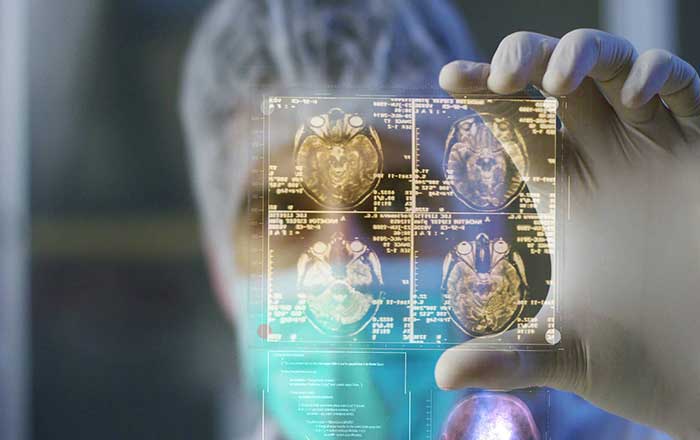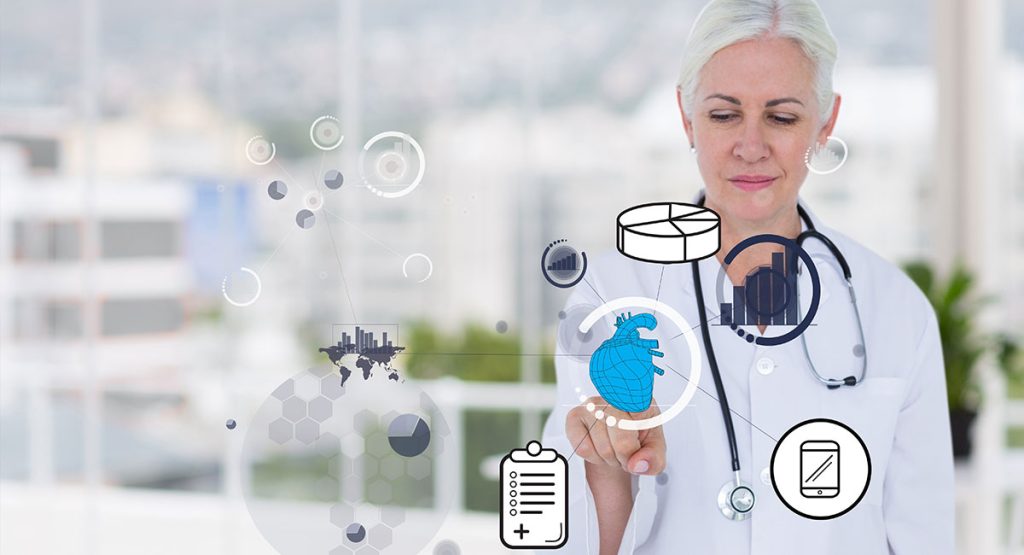IoMT in the Healthcare Industry

In the ever-evolving landscape of healthcare, IoMT in the Healthcare Industry,the integration of technology has played a pivotal role in enhancing patient care, improving operational efficiency, and addressing critical challenges. One such transformative technology making waves is the Internet of Medical Things (IoMT).
Evolution of IoMT in Healthcare
The roots of IoMT can be traced back to the early attempts to digitize healthcare records. However, it has evolved significantly over the years, propelled by advancements in sensors, connectivity solutions, and data analytics. This evolution has not only improved the quality of care but also revolutionized healthcare delivery.
Key Components of IoMT
IoMT comprises various components, including a myriad of devices and sensors, robust connectivity solutions, and sophisticated data analytics tools. These components work synergistically to collect, process, and interpret data, providing healthcare professionals with valuable insights into patient health and treatment efficacy.

Applications in Patient Care
The deployment of IoMT in patient care has been revolutionary. From remote monitoring of vital signs to facilitating timely diagnostics and personalizing treatment plans, IoMT has become an indispensable tool for healthcare providers. Patients benefit from the convenience of receiving care in the comfort of their homes, leading to improved adherence to treatment plans.
Enhancing Operational Efficiency
Beyond patient care, IoMT has proven instrumental in streamlining healthcare workflows. It aids in inventory management, optimizing resource allocation, and reducing operational costs. By automating routine tasks, healthcare professionals can focus on more complex aspects of patient care, ultimately improving overall efficiency.
Challenges in Implementing IoMT
Despite its numerous advantages, IoMT in the Healthcare Industry, the implementation of IoMT in healthcare is not without challenges. Data security concerns, interoperability issues between different devices and systems, and the need for strict regulatory compliance pose significant hurdles. Addressing these challenges is crucial to ensuring the seamless integration of IoMT into healthcare systems.
IoMT and Telemedicine Integration
The synergy between IoMT and telemedicine has paved the way for revolutionary changes in healthcare delivery. Virtual consultations are facilitated with real-time data sharing, allowing healthcare professionals to make informed decisions remotely. This integration has proven vital, especially in times when physical distancing is imperative.
Impact on Healthcare Accessibility
IoMT has the potential to bridge the gap in healthcare accessibility, particularly in rural areas. By enabling remote consultations and monitoring, it brings quality healthcare to regions where traditional infrastructure is lacking. This not only improves healthcare outcomes but also contributes to reducing disparities in healthcare services.

Future Trends and Innovations
The future of IoMT holds exciting possibilities. Integrating artificial intelligence (AI) for more sophisticated data analysis, predictive analytics for proactive healthcare interventions, and creating interconnected healthcare ecosystems are some of the trends that will shape the future of healthcare.
Success Stories
Real-world examples highlight the success of IoMT implementation. From wearable devices tracking chronic conditions to smart medication dispensers ensuring medication adherence, these success stories underscore the positive impact IoMT has on patient outcomes and overall healthcare management.
Addressing Privacy Concerns
To ensure widespread adoption, addressing privacy concerns is paramount. Implementing robust security measures to safeguard patient data and ensuring compliance with healthcare regulations are essential steps in building trust in IoMT systems.
Cost-Benefit Analysis
While the initial investment in IoMT implementation may seem substantial, the long-term benefits far outweigh the costs. Improved patient outcomes, operational efficiency, and cost-effective solutions contribute to the overall economic viability of integrating IoMT into healthcare practices.
Role of IoMT in Pandemic Response
The COVID-19 pandemic highlighted the significance of IoMT in responding to healthcare crises. Remote patient monitoring played a crucial role in managing patient influx, and IoMT-supported telemedicine alleviated the burden on overwhelmed healthcare systems.
Global Adoption and Collaboration
IoMT’s global adoption requires collaborative efforts. International initiatives and collaborative endeavors for standardization ensure that IoMT systems seamlessly integrate into different healthcare ecosystems, fostering a more connected and interoperable global healthcare network.
Conclusion
In conclusion, IoMT is a transformative force in the healthcare industry, enhancing patient care, improving operational efficiency, and addressing longstanding challenges. As we embrace the future of healthcare technology, IoMT stands as a beacon of innovation with the potential to revolutionize the way we approach healthcare delivery.
Frequently Asked Questions (FAQs)
- Is IoMT only for large healthcare organizations?
- No, IoMT can be tailored to suit the needs of healthcare organizations of all sizes, promoting scalability and adaptability.
- How does IoMT ensure the security of patient data?
- IoMT systems incorporate robust security measures, including encryption and access controls, to safeguard patient data.





